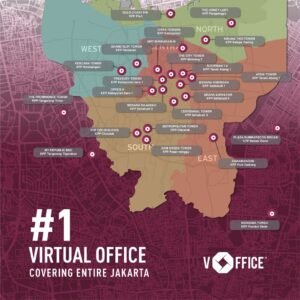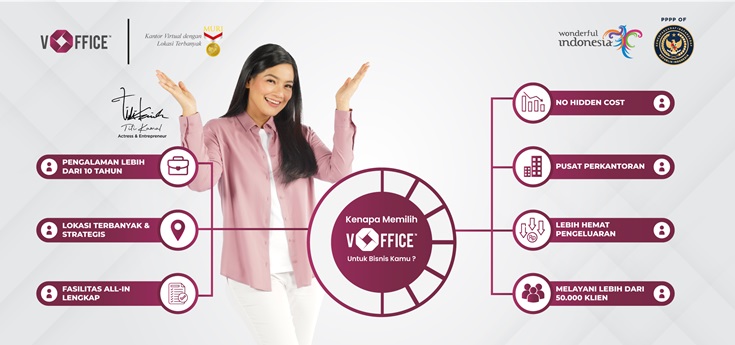A clear organizational structure is the key to a company’s operational success, including in a Limited Liability Company (PT). Each position plays a crucial role in achieving the company’s goals.
In this article, you will understand the functions of each role, from directors to regional divisions, which help the company operate effectively and efficiently.
Read Also: Understanding PT (Limited Liability Company)
What Is a PT Company Organizational Structure?
The organizational structure of a PT company is a hierarchical framework that defines the distribution of tasks, authority, and responsibilities within the company. This structure aims to create order, efficiency, and facilitate collaboration among individuals and divisions. In a Limited Liability Company (PT), the organizational structure plays an essential role in ensuring that everyone has a clear role in supporting the company’s objectives.
Citing Human Resource Management (2022) by Dr. Oloan Situmorang, a PT is a legal entity with capital divided into shares owned by one or more parties. Shareholders act as the highest authority, directing and overseeing the company’s operations through general meetings of shareholders (GMS).
Read Also: Types of PT Companies and Their Explanations
Types of PT Company Organizational Structures
Here are several types of organizational structures commonly implemented in PT companies:
Functional Organizational Structure
This structure groups tasks based on functions such as finance, marketing, production, or human resources. It is suitable for companies with well-defined and separate operations.
Divisional Organizational Structure
Tasks are grouped based on products, regions, or market segments. Each division is fully responsible for the outcomes in its field.
Matrix Organizational Structure
A combination of functional and divisional structures, ideal for complex projects or tasks that require expertise from multiple fields.
Network Organizational Structure
Based on collaboration between independent companies leveraging each other’s strengths. Suitable for companies seeking to expand reach without building all internal functions.
Flat Organizational Structure
Reduces hierarchical layers to create direct communication between management and employees. Perfect for companies with a collaborative work culture.
Read Also: PT Capital in Indonesia: A Guide Based on Applicable Laws
Composition of a PT Company Organizational Structure
The PT company organizational structure typically includes the following key positions:
Board of Directors
The board of directors holds the primary control in the company. Their responsibilities include strategic planning, making critical decisions, and supervising overall company operations. They report to shareholders through the board of commissioners.
President Director
The president director is the highest-ranking leader in the company, tasked with formulating the company’s vision and mission, as well as setting strategic policies. They also serve as the company’s primary representative in external relations and make strategic decisions with significant impacts.
Director
Directors implement the company’s strategies and policies set by the president director. They typically oversee specific departments or divisions to ensure smooth operations and achievement of the company’s targets.
Finance Director
The finance director plays a critical role in managing the company’s finances. Their tasks include budgeting, cash flow management, and financial reporting oversight, ensuring financial health and transparency.
Human Resources Director
Responsible for managing human resources, the HR director ensures the company has competent employees. Their tasks include HR development, labor policy management, and employee training.
Manager
Managers work under directors and oversee day-to-day operations. They are responsible for task execution, team coordination, and achieving the company’s set targets.
HR Manager
The HR manager handles recruitment, training, and employee development processes. They also ensure employees receive their rights as per applicable regulations.
Marketing Manager
The marketing manager designs marketing strategies, analyzes markets, and increases the sales of the company’s products or services. This role requires strong analytical and innovative skills to meet market targets.
Factory Manager
The factory manager oversees production processes, ensuring product quality, staff management, and operational efficiency of production tools to meet company targets.
Administration and Warehousing
This division manages all administrative procedures, transactions, and bookkeeping related to the warehouse. They also ensure smooth and standard-compliant storage processes.
Regional Division
Regional divisions manage company operations in specific areas, especially for companies that have expanded. Their responsibilities include managing regional assets, implementing headquarters policies, and improving regional operational performance.
Read Also: PT Shares Guide: Classification, Distribution, and Related Rules
Benefits of a Well-Defined Organizational Structure
A clear organizational structure provides numerous benefits, such as:
- Facilitating the delegation of tasks and responsibilities.
- Accelerating decision-making processes.
- Increasing efficiency and productivity.
- Ensuring effective communication between divisions.
- Helping the company achieve strategic goals.
Establishing the ideal organizational structure for your company requires careful planning. To help you focus on growing your business without worrying about legal formalities, consider using PT creation and legality services from vOffice.
Our professional team is ready to assist with various business needs, such as:
- Establishment of Limited Liability Company (PT)
- Establishment of Commanditaire Vennootschap (CV)
- Haki / Indonesia trademark registration
- Tax Consultation
- Virtual Office
- Office Space for Rent
- Meeting Room Rental
- Rent a coworking space
- and various other services.
Contact us now and get special offers!











